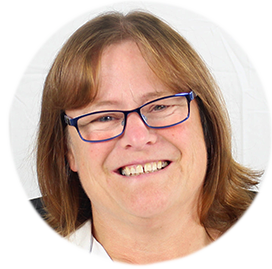TaxCalc Blog
News and events from TaxCalc
What can an independent practice learn from the software selection process used by a 200-strong accountancy franchise?
I was recently asked to join two of the directors of the TaxAssist franchise on stage at Accountex. The brief was to share some of the lessons we both learnt during their recent software review, which resulted in TaxCalc being rolled out nationally for core compliance needs.
I set out to outline the key criteria that turned out to be pivotal in the assessment for the network, which I'm pleased to say in which TaxCalc scored highly. However, it struck me that the very same principles equally apply to an independent practice considering their own needs. As such, I thought they were worth sharing. They are:
- Functionality fit
- Track record of innovation
- Learning curve
- Running a trial
- Taking up references
- Ease of migration
- Integration
Functionality fit
'Fit' is hugely important when choosing software. And it's not about the most comprehensive solution, but the best one for your practice. It might seem safe to plumb for the most technically featured package. However, whistles and bells you don't need can get in the way, never mind adding unnecessary cost.
As such, it's important to understand what you really need, what might be nice and what you really don't need. You can then look for the best match without too much idle functionality.

It also helps to recognise where you sit on the scale between 'consistency and control' and 'infinite flexibility'. There is often a balance to be struck between two objectives. At one end of the scale you have a system that allows you to tailor absolutely everything. At the other, sits a high level of assured compliance and confidence for the practice owner. To quote a customer of mine from many years ago, "The flexibility to edit something is often the flexibility to get it wrong".
This might not matter if you are a one-person band, understand exactly what you're doing and know your software package inside out. But, if you have a team including anyone more junior or new, will the system 'protect them from themselves'? Will it highlight potential errors? Better still, will it just prevent them from changing something that really should not be changed?
TaxCalc definitely sits at that latter end of the scale. In this mature market, we find that most practitioners have been through previous cycles of changing software. Those who have, and have spent countless hours checking the work of the new hires, recognise the value of this.
Track record of innovation

The functionality you see today is most important, rather than promises of 'jam tomorrow'. But history is also a good guide to how a provider will cope in future.
This market is uniquely dynamic and subject to constant, sometimes dramatic change, often with little warning. In addition to the predictable annual tax cycle and occasional financial reporting change, there are the more substantial regime shifts. Initiatives of the scale of MTD only arise periodically, but they do happen and more will come.
You need comfort that a supplier has the resources and talent to deliver these vital changes in a timely, innovative and well executed fashion. How they've performed in the past is a good test of this.
Beyond these statutory requirements, customer expectations change over time and technology and external factors open up new possibilities. You will expect your new software to evolve in response. How have they done on this score up until now?
Our own timely implementation of MTD for VAT was a positive marker for TaxAssist. There was also our now more distant, but elegant, handling of automated iXBRL tagging for final accounts. That is another example that has given many customers confidence for whatever the future holds.
The learning curve (for now and future)
Training also came up as part of the initial enquiry from TaxAssist. The team asked what locations we had for group training. This threw us a little, as we have never had need of face to face training. We explained that the learning curve with TaxCalc is really short and happily this was taken on board until validated by a live pilot exercise.
But the learning curve matters a lot, and not just in the early days... if you intend to grow. Take-up is really key, not only for existing staff at the point of change, but also any who join in future. No practice wants to lose a chunk of time in getting to grips with something new. Pressure also grows when clients are waiting for accounts and tax work. Beyond that, though, if you're looking to expand your firm aggressively, the impact spans into the future. You're not going to want to have a long hiatus while every new person you bring in gets up to speed, and saps time from your experienced people.
To hijack the old saying about support, the best training is no training at all. In fact, we often reluctantly book training days for customers who think they will need them, only to cancel them when they realise they don't.
To bear this out, we moved nearly 200 TaxAssist franchises over in the course of only a few months and delivered only two live remote training sessions. Everyone else picked it up from a handful of recorded videos.
(An example of training videos for getting started with TaxCalc)
The importance of running a trial
This one is simple. Don't take anyone's word for it. That's not to say any supplier will not be honest with you, but the capacity for misunderstanding or inadvertent omission is great, on both sides. As buyers we all neglect to mention requirements. Some we forget and some we assume are catered for.
There's also a big difference between a 'tick in the box' of a package having a certain feature, and it being practical and easy to use. No one can judge the intangible of how much something matters to you but you, and your team. So, try it for yourself.
TaxAssist ran a two-month pilot with 20 franchisees but most single firms learn everything they need after a few days of experimentation. We offer a 14-day trial as standard and actually encourage over-eager potential customers to take one up to make sure it meets their needs.
References

In addition to getting your hands on the software yourself it gives comfort to speak to those who've fired it in anger, and over a longer period.
Every supplier can drum up a couple of satisfied customers, but finding there are scores of delighted ones is a greater reassurance. Better still, find some yourself on top of those offered. Tap fellow practitioners on the shoulder at industry events. Ask them what they use and how they find it.
Best of all, find someone you know personally from your peer group who's in similar circumstances and who's opinion you already respect.
Ease of migration (from any incumbent system)
The actual business of migration is also critical for any established practice. To some degree this can be hard to separate from the learning curve, but the fear of the changeover process is a persistent concern for prospective customers. They steel themselves for a lot of disruption and they expect productivity to drop for a long period whilst they settle in.
However, the reality we see with customers moving to TaxCalc is different. The vast majority are pleasantly surprised, if not delighted, to find it's much shorter than they thought. Some set aside months of reduced output only to find they are up and running in a few days. In fact, they often describe a net efficiency gain in their first week.
I think this deep-seated fear is often borne out of painful memories of implementing an incumbent package years before. Some of those legacy systems can be a big project to get up and running. People, understandably, project that on to their next move.
I'm happy to say that's not what they find moving to TaxCalc. It is cheering to hear that repeated by new customers every month.
Integration (within and without)
It's not new to suggest that maximising higher profit advisory work is the holy grail for many firms. In the main, technology plays its part in this by simplifying and automating compliance as an enabler, not for its own sake.
So, it matters only as far as it delivers a better client experience and a smoother more efficient practice experience. To achieve this, and remain mindful of the need for a functional fit as discussed earlier, there is another decision to be made. How much of the full set of modules required need to sit entirely within the single supplier suite you are considering? How many can live in the wider ecosystem? Integration can exist both inside and outside a suite.
Our considered approach after years of watching how practitioners operate, is twofold. When it makes most sense to do so, we offer functionality within our suite. In some cases, there is no substitute for the kind of deep integration you only get from a single shared database. Most feel that only an identical shared interface can offer an utterly seamless flow of work.
In other areas, though, connectivity with external products is best. It allows the user to capitalise on the specialisms honed by a dedicated supplier. In this realm, products do not need to look the same or necessarily share every piece of data. Instead, they need to be able to easily exchange only that information that is most commonly in flux.
Opinions will always vary on where the line should be drawn between the two and it is for each firm to determine their own view. We've been listening carefully to existing and prospective TaxCalc customers over the years. Our findings have led to a number of initiatives in recent and coming months.
For example, within the TaxCalc suite, we announced three major pending product releases at Accountex this year. TaxCalc Time for time recording, Practice Manager Plus for advanced workflow, and AML Centre for practice-wide, anti-money laundering tools. The feedback we received told us those areas are most effective, when needed, if they are internal to a suite.
But outside it, we've followed a different path. We've forged connections with bookkeeping suppliers like QuickBooks, Xero and FreeAgent. Most recently that's extended to very well received two-way integration with QuickBooks, and with more to follow. Similarly, we also revealed we had struck a connection with established document management specialist, SmartVault. That will provide highly functionality for filing and sharing documents straightaway with even tighter integration to come.
So, that's our vision – a fully scalable solution for all sizes of practice. For even the smallest micro practice, we have something that's extremely easy to use and affordable, without sacrificing the key functions they need. For larger firms, we have layers of optional functionality and targeted external integrations.




